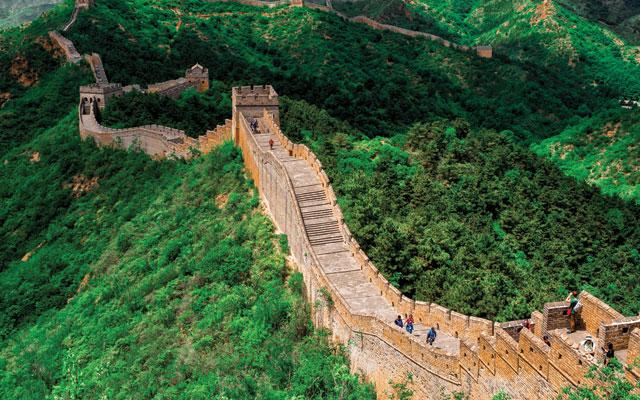Why are inbound tourism numbers into China, a country steeped in culture and heritage, lagging behind its booming outbound sector?

China may be the world’s largest tourist source but the country is punching below its weight as a global travel destination. Despite its splendid history, culture and culinary traditions, the number of international arrivals to China has yet to surpass 30 million, a meagre figure compared to the 122 million Chinese outbound travellers in 2016.
The vast “inbound tourism trade deficit” was an issue that Ctrip co-founder and chairman James Liang sought to highlight during his keynote address at the ITB China conference in Shanghai earlier this year.

To put things into perspective, Liang compared China’s 29.2 million inbound travellers (excluding Hong Kong, Macau and Taiwan) with the US (75.1 million), Japan (28.7 million), the UK (37.6 million), India (14.6 million) and Turkey (39.9 million).
“China received just 30 million in actual figures for arrivals, which have not changed in years,” Liang remarked, a far cry from its booming outbound sector.
Visa policy a hindrance
To get a handle of vast discrepancy between China’s inbound and outbound figures, the Ctrip top honcho compared the country’s visa policy with that of others.
China has just 14 countries on its visa-exemption list, significantly less than the US (38), Japan (68), the UK (56) and Turkey (78). Only India, with a similar population size as China, allows fewer countries visa-free entry (three), although it also has an e-visa system in place, Liang noted.
Of the opinion that China’s restrictive visa policy is standing in its way to attract more international arrivals, Liang added that according to UNWTO, there are only five other countries in the world with stricter inbound visa restrictions than China, namely Nigeria, Gabon, Pakistan, Angola and Saudi Arabia.
China Tourism Academy’s head of international tourism research Yiyi Jiang agrees that restrictive visa policy poses a hindrance to visitors, but also argues that the Chinese inbound sector is more developed than the outbound sector, which only took off after 2000.
“China’s inbound tourism market has been opened since the country’s economic reform (in 1978), so the market can’t grow forever. It’s already a mature sector,” she posited.
As well, the Chinese economy has grown by leaps and bounds in the intervening years, pushing up living costs and salaries. What hasn’t changed as fast though are visitor perceptions, with potential travellers still viewing China as the world’s factory and a destination with cheap prices, Exo Travel China’s managing director Olivier Marchesin asserted.
“Real estate today in the big Chinese cities is much more expensive than in their European and American counterparts, so this impacts everything in the market, from salary to food,” he shared.
“When we send China quotations, (clients) are surprised by the prices. They often give up (on visiting China) when they see the rates.”
Rolling out the welcome mat
The easiest way to get around China’s shortfall in inbound tourism trade and foreign currency income is adopting a more welcoming approach in its visa regulations, Liang opined.
While foreign countries have adapted visa regulations to attract Chinese outbound tourists, he said China should likewise improve its tourist attractiveness through a less restrictive visa policy, even if the move is not reciprocated.
“If other countries want to restrict this flow of tourism (through visa policies), we shouldn’t reciprocrate. Why hurt ourselves?” questioned Liang.
Visa relaxation aside, Liang also wants airport development in China to be improved, as departure and landing fees in China’s airports are one of the world’s highest while high population cities like Suzhou, for instance, still has no airport.
He also sees ample opportunities in rail travel, which will place destinations further afield within one hour of hubs like Shanghai and Beijing.
In the march for progress, China needs to pay attention to retaining the charms of old living quarters like the Beijing hutong and Shanghai longtang, according to Marchesin. “Giving better living conditions for the residents in such places is understandable, but closing all small restaurants and the likes will push the tourists away,” he stated.
The ability to tell “a good story of China”, according to Jiang, is hence key to promoting the country on the global travel stage, focusing on its modern achievements and present way of living to match its tourism appeal with its economic development and world influence.
Believing that inbound tourism development is closely tied to a country’s progress, Jiang is certain that China’s One Belt, One Road foreign and economic policy will improve China’s image overseas and create new charm for the country as a travel destination.
Marchesin concurred: “Chinese history is amazing, but Chinese development is also exciting sometimes. My guests are really amazed with the new China, which they never expected before their visits.”
Amid the strong competition for tourist dollar in Asia-Pacific, China should invest more in tourism marketing overseas, urged Hemant Kaushik of Exotic Holidays, an Auckland-based travel firm specialising in Asia.
“China is not investing enough in tourism marketing, unlike Thailand, Malaysia and Singapore which are supportive of trade and also give strong marketing support to agents,” he said.



















